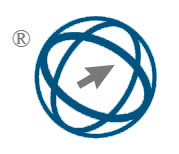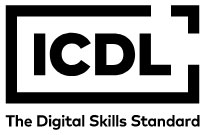A Machine Learning Based Framework For Bankruptcy Prediction In Corporate Finances Using Explainable AI Techniques
Abstract
Forecasting bankruptcy within corporate finances is an indispensable endeavor crucial for sustaining business growth and fostering stability. The paper presents a methodology to redefine the conventional approach to bankruptcy prediction within corporate finance. Through the adept utilization of advanced machine learning techniques, notably classification models, a dynamic and adaptable framework is established, enabling the systematic categorization of companies based on their bankruptcy risk profiles. Moreover, the methodology addresses the inherent challenge of data bias by integrating oversampling techniques like the Synthetic Minority Over-sampling Technique (SMOTE), thereby ensuring a more equitable representation of minority class samples and bolstering the model’s predictive accuracy. The resulting model delivers timely and precise forecasts of bankruptcy risk, fortified by crucial recommendations such as the Altman Z-Score for vulnerability assessment, Debt-to-Equity Ratio for insights into leverage, Quick Ratio for assessing liquidity, and Explainable AI Techniques like SHapley Additive exPlanations (SHAP) analysis for transparent interpretations. This comprehensive approach equips stakeholders with tailored recommendations, empowering them to proactively safeguard their organizations’ financial well-being and avert the perils of bankruptcy. The comparative analysis presented in paper demonstrates that the proposed method assesses the bankruptcy risk more accurately. The integration of Explainable AI techniques and key financial metrics helps the stakeholders to take vital decisions about corporate finances.
Full Text:
PDFReferences
Maulana, Didit Johar, Siti Saadah, and Prasti Eko Yunanto. ”Kmeans-SMOTE Integration for Handling Imbalance Data in Classifying Financial Distress Companies using SVM and Na¨ıve Bayes.” Jurnal RESTI (Rekayasa Sistem dan Teknologi Informasi) 8, no. 1 (2024): 54-61.
Liashenko, Olena, Tetyana Kravets, and Yevhenii Kostovetskyi. ”Machine learning and data balancing methods for bankruptcy prediction.” Ekonomika 102, no. 2 (2023): 28-46.
Enkhtuya, Tuguldur, and Dae-Ki Kang. ”Bankruptcy Prediction with Explainable Artificial Intelligence for Early-Stage Business Models.” International Journal of Internet, Broadcasting and Communication 15, no. 3 (2023): 58-65.
Fan, Mengting, Zan Mo, Qizhi Zhao, and Zhouyang Liang. ”Innovative Insights into Knowledge-Driven Financial Distress Prediction: a Comprehensive XAI Approach.” Journal of the Knowledge Economy (2023): 1-42.
Wahyuni, Sari. ”Prediction of Bankruptcy Levels Using the Almant Z-Method Score in Banking Companies on the Indonesia Stock Exchange for the 2018- 2021 Period.” MANKEU (Jurnal Manajemen Keuangan) 1, no. 2 (2023). https://doi.org/10.61167/mnk.v1i2.39.
Lokeshnath, B., and M. Sandhya. ”INSOLVENCY AND BANKRUPTCY CODE: A STUDY OF INDIAN BANKS WITH REFERENCE TO ALTMAN Z SCORE.” EPRA International Journal of Economic and Business Review (JEBR) 11, no. 8 (2023): 69-79.
Tran, Kim Long, Hoang Anh Le, Thanh Hien Nguyen, and Duc Trung Nguyen. ”Explainable machine learning for financial distress prediction: evidence from Vietnam.” Data 7, no. 11 (2022): 160.
Pavlicko, Michal, Marek Durica, and Jaroslav Mazanec. ”Ensemble model of the financial distress prediction in Visegrad group countries.” Mathematics 9, no. 16 (2021): 1886.
Alam, Talha Mahboob, Kamran Shaukat, Mubbashar Mushtaq, Yasir Ali, Matloob Khushi, Suhuai Luo, and Abdul Wahab. ”Corporate bankruptcy prediction: An approach towards better corporate world.” The Computer Journal 64, no. 11 (2021): 1731- 1746.
Ansari, Abdollah, Ibrahim Said Ahmad, Azuraliza Abu Bakar, and Mohd Ridzwan Yaakub. ”A hybrid metaheuristic method in training artificial neural network for bankruptcy prediction.” IEEE access 8 (2020): 176640-176650.
Soui, Makram, Salima Smiti, Mohamed Wiem Mkaouer, and Ridha Ejbali. ”Bankruptcy prediction using stacked auto-encoders.” Applied Artificial Intelligence 34, no. 1 (2020): 80-100.
Fares, Omar H., Irfan Butt, and Seung Hwan Mark Lee. ”Utilization of artificial intelligence in the banking sector: a systematic literature review.” Journal of Financial Services Marketing 28, no. 4 (2023): 835-852.
Hanif, Ambreen. ”Towards explainable artificial intelligence in banking and financial services.” arXiv preprint arXiv:2112.08441 (2021).
M, Hiran & G, Megavarshini & Sreenivasan, Aswathy & Suresh, Ma. (2023). Machine Learning in the Banking Sector. 1081-1088. 10.46254/AN13.20230313.
Bahoo, Salman, Marco Cucculelli, Xhoana Goga, and Jasmine Mondolo. ”Artificial intelligence in Finance: a comprehensive review through bibliometric and content analysis.” SN Business & Economics 4, no. 2 (2024): 23.
Sharma, Bhumiswor, P. Srikanth, and S. Jeevananda. ”Financial Distress and Value Pre mium using Altman Revised Z-score Model.” Vision (2023): 09722629231198604.
Cındık, Zeynep & Armutlulu, ˙Ismail. (2021). A revision of Altman Z-Score model and a comparative analysis of Turkish companies’ financial distress prediction. Na tional Accounting Review. 3. 237-255. 10.3934/NAR.2021012.
Chen, Tsung-Kang, Hsien-Hsing Liao, Geng Dao Chen, Wei-Han Kang, and Yu-Chun Lin. ”Bankruptcy prediction using machine learn ing models with the text-based communicative value of annual reports.” Expert Systems with Applications 233 (2023): 120714.
Kim, Hyeongjun, Hoon Cho, and Doojin Ryu. ”Corporate bankruptcy prediction using machine learning methodologies with a focus on sequential data.” Computational Economics 59, no. 3 (2022): 1231-1249.
Dablain, Damien & Krawczyk, Bartosz & Chawla, Nitesh. (2022). DeepSMOTE: Fusing Deep Learning and SMOTE for Imbalanced Data. IEEE Transactions on Neural Networks and Learning Systems. PP. 1-15. 10.1109/TNNLS.2021.3136503.
Elreedy, Dina, Amir F. Atiya, and Firuz Kamalov. ”A theoretical distribution analysis of synthetic minority oversampling technique (SMOTE) for imbalanced learning.” Machine Learning (2023): 1-21.
Hairani, Hairani, Khurniawan Eko Saputro, and Sofiansyah Fadli. ”K-means-SMOTE untuk menangani ketidakseimbangan kelas dalam klasifikasi penyakit diabetes dengan C4. 5, SVM, dan naive Bayes.” Jurnal Teknologi dan Sistem Komputer 8, no. 2 (2020): 89-93.
Salehi, Amir Reza, and Majid Khedmati. ”A cluster-based SMOTE both-sampling (CSBBoost) ensemble algorithm for classifying imbalanced data.” Scientific Reports 14, no. 1 (2024): 5152. 12 Informatica 45 page 501–yyy V. Chandgadkar et al.
Kaggle, US Company Bankruptcy Prediction Dataset, https://www.kaggle.com/datasets/utkarshx27/americancompanies-bankruptcy-prediction-datase
DOI: https://doi.org/10.31449/inf.v49i15.6745

This work is licensed under a Creative Commons Attribution 3.0 License.









